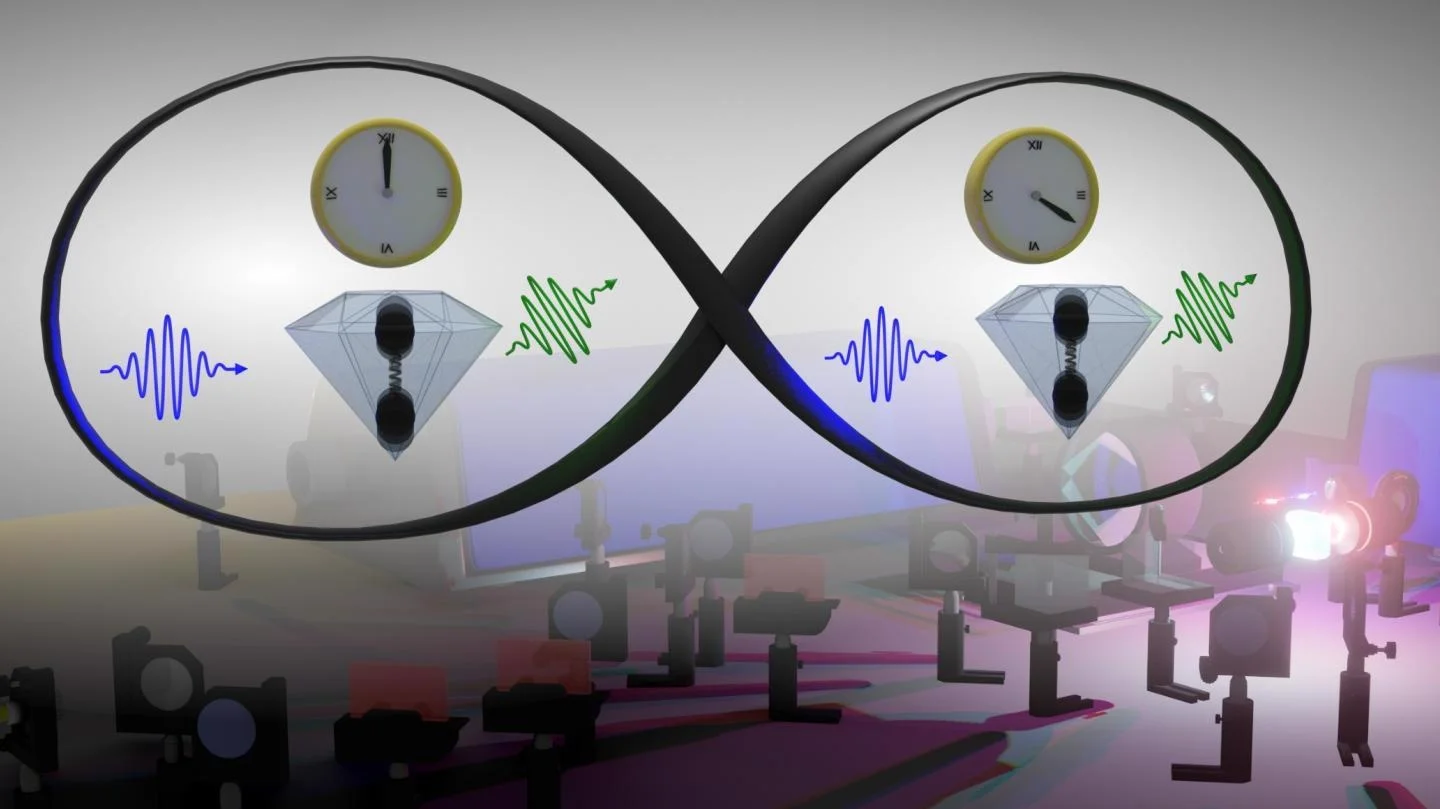
Quantum superposition is a concept that lies at the heart of quantum mechanics, the branch of physics that deals with the behavior of matter and energy on the smallest scales. It is a fascinating and mind-bending phenomenon that defies our everyday intuition. In simple terms, quantum superposition allows particles or systems to exist in multiple states simultaneously, until they are observed or measured. This concept challenges our classical understanding of reality and has profound implications for fields such as computing, communication, and even the nature of existence itself. In this article, we will explore 15 fascinating facts about quantum superposition that will not only amaze and inspire you, but also deepen your understanding of the strange and wondrous world of quantum physics.
Key Takeaways:
- Quantum superposition allows particles to exist in multiple states simultaneously, challenging our understanding of reality and paving the way for quantum computing and teleportation.
- It’s like Schrödinger’s cat being both alive and dead until observed, showing the weird and wonderful world of quantum physics with practical applications in sensing and imaging.
Quantum Superposition is a fundamental principle in quantum physics.
Quantum superposition is a phenomenon where a quantum system can exist simultaneously in multiple states. This means that an object, such as a particle, can exist in multiple places or have multiple properties at the same time.
It is a key feature of quantum mechanics.
Quantum superposition is a fundamental concept in quantum mechanics, which is the branch of physics that deals with the behavior of particles on a quantum level. It is one of the reasons why quantum mechanics is so different from classical physics.
Quantum superposition allows for quantum computers to perform complex calculations.
One of the most promising applications of quantum superposition is in quantum computing. By utilizing the ability of quantum bits, or qubits, to exist in multiple states simultaneously, quantum computers can potentially solve certain problems much faster than classical computers.
It was first introduced by Erwin Schrödinger.
Erwin Schrödinger, an Austrian physicist, is credited with introducing the concept of quantum superposition in He developed the famous Schrödinger’s equation, which describes how quantum systems evolve over time.
Quantum superposition has been experimentally verified.
Through numerous experiments, scientists have confirmed the existence of quantum superposition. For instance, the famous double-slit experiment demonstrates that particles can exhibit wave-like properties and interfere with themselves.
It challenges our intuitive understanding of reality.
Quantum superposition is a strange concept that goes against our classical understanding of how objects behave in the macroscopic world. It forces us to reconsider our notions of certainty and the fundamental nature of reality.
Quantum superposition is not limited to particles.
While often associated with particles like electrons and photons, quantum superposition can also occur with larger objects. Experiments have shown superposition in systems such as superconducting circuits and even microscopic diamonds.
Quantum superposition enables quantum teleportation.
Through a phenomenon known as quantum entanglement, quantum superposition allows for the teleportation of quantum states between particles. This has potential applications in secure communication and quantum information processing.
It plays a crucial role in quantum cryptography.
Quantum superposition is central to the field of quantum cryptography, which aims to secure information using the principles of quantum mechanics. It allows for the secure transmission of cryptographic keys through the use of quantum states.
Quantum superposition is a principle behind quantum interference.
Quantum interference occurs when two or more quantum states overlap, leading to a combination of probabilities. This interference allows for constructive and destructive interference, which has significant implications in various quantum phenomena.
It forms the basis of the famous thought experiment, Schrödinger’s cat.
Schrödinger’s cat is a thought experiment that illustrates the concept of quantum superposition. It involves placing a cat in a box with a radioactive substance that has a 50% chance of decaying. Until the box is opened, the cat is considered to be in a superposition of being both alive and dead.
Quantum superposition has practical applications in sensing and imaging.
Quantum sensors that rely on superposition can achieve higher precision in measuring physical quantities such as magnetic fields or gravitational forces. Quantum imaging techniques also benefit from the enhanced sensitivity provided by quantum superposition.
Quantum superposition is a possible explanation for quantum wave-particle duality.
Quantum wave-particle duality refers to the fact that particles can exhibit both wave-like and particle-like behavior. Quantum superposition is one of the underlying principles that helps explain this puzzling aspect of quantum physics.
Quantum superposition has connections to the concept of quantum entanglement.
Quantum entanglement and quantum superposition are closely linked. Entanglement occurs when two or more particles become correlated in such a way that the state of one cannot be described independently of the others. Superposition allows for the creation of such entangled states.
Quantum superposition is essential for the development of quantum technologies.
Quantum superposition is at the core of many quantum technologies, including quantum computing, quantum cryptography, and quantum sensing. It is paving the way for new possibilities and advancements in various scientific and technological fields.
Conclusion
In conclusion, quantum superposition is one of the most intriguing and mind-boggling concepts in the field of physics. It challenges our conventional understanding of how the world works and opens up a whole new realm of possibilities. The ability of particles to exist in multiple states simultaneously defies classical logic and promises groundbreaking advancements in fields such as computing, communication, and cryptography.Understanding quantum superposition requires embracing the concept of wave-particle duality and accepting the probabilistic nature of quantum mechanics. It has revolutionized our understanding of reality and continues to be an active area of research and exploration.As we delve deeper into the mysteries of quantum superposition, we are likely to uncover even more fascinating facts and applications. From Schrödinger’s famous cat experiment to the potential for quantum computers to solve complex problems, the world of quantum superposition holds endless possibilities for discovery and innovation.Harnessing the power of quantum superposition has the potential to revolutionize technology as we know it. It is an exciting time to be a part of the scientific community, as we strive to unlock the secrets of the quantum world and harness its power for the benefit of humanity.
FAQs
Q: What is quantum superposition?
A: Quantum superposition is a fundamental principle of quantum mechanics that states that a quantum system can exist in multiple states simultaneously until it is observed or measured.
Q: How does quantum superposition work?
A: Quantum superposition is the result of wave-particle duality, where particles can exhibit both wave-like and particle-like behavior. It is described mathematically by a combination of wave functions and probabilities.
Q: What is the significance of quantum superposition?
A: Quantum superposition is significant because it allows for the creation of quantum computers, which can solve certain problems exponentially faster than classical computers. It also has implications for fields such as cryptography, communication, and teleportation.
Q: Can we observe quantum superposition?
A: No, we cannot directly observe quantum superposition. When a quantum system is measured, it collapses into one of its possible states, eliminating the superposition. However, we can indirectly observe the effects of superposition through experiments and measurements.
Q: Are there any limitations to quantum superposition?
A: One limitation of quantum superposition is that it is sensitive to external interactions, which can cause decoherence and destroy the delicate quantum state. Scientists are actively researching methods to overcome this limitation to improve the stability and scalability of quantum systems.
Q: How is quantum superposition different from classical superposition?
A: Classical superposition refers to the combination of physical states that can be observed simultaneously, whereas quantum superposition involves the combination of multiple quantum states that exist until measured or observed.
Quantum superposition may seem mind-boggling, but it's just the tip of the iceberg. Dive deeper into this fascinating world by exploring the superposition principle, which governs how quantum states combine. Unravel more intriguing aspects of quantum mechanics and expand your understanding of this captivating field.
Was this page helpful?
Our commitment to delivering trustworthy and engaging content is at the heart of what we do. Each fact on our site is contributed by real users like you, bringing a wealth of diverse insights and information. To ensure the highest standards of accuracy and reliability, our dedicated editors meticulously review each submission. This process guarantees that the facts we share are not only fascinating but also credible. Trust in our commitment to quality and authenticity as you explore and learn with us.


